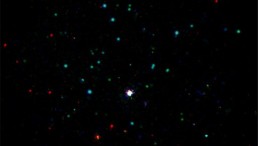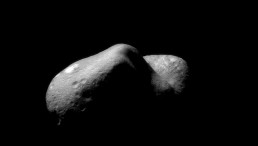According to even the most generous estimates, more than 80 percent of the world's oceans are totally unmapped. The average ocean depth is nearly two and a half miles, and oceans cover 70 percent of the planet. Do the math and, in terms of total volume, 99 percent of Earth's biosphere is essentially unknown. We think we've explored our planet, but those statistics are sobering. Topographically, we know more about the moon than we do about Earth.
The math is about to get a little brighter, though. The XPRIZE Foundation has announced the winners of an ambitious three-year program to develop safer, faster, and more affordable ways of mapping the ocean floor. The hope is to eventually map out the entirety of the sea floor and its biosphere, opening vast areas for future exploration and potential scientific discoveries.
The competition's official title is the $7M Shell Ocean Discovery XPRIZE, and Dr. Jyotika Virmani, XPRIZE executive director, acknowledges some skepticism around the motives of an oil and gas company's funding of the endeavor. Still, she said, industry sponsorship is common in ocean science initiatives. "The entire ocean community-that includes oil and gas companies as well as agencies like NOAA-we're all working toward a common goal, to generate a map of the sea floor that will be available to everyone," Virmani said.
The competition has attracted dozens of teams from around the world, including professional design groups, commercial exploration outfits, university labs, and even a few high school teams. Its essential challenge is to develop autonomous underwater vehicles capable of transmitting high-resolution photographs and generating complex bathymetric maps-an underwater topographic map-at depths of up to 4,000 meters.
It seems pretty straightforward until you consider that the machines must be capable of working independently in a particularly tech-hostile environment: crushing pressure, total darkness, icy temperatures, curious sharks. The AUVs must also be truly autonomous-launched from shore without boats or crews-and transmit acquired data with no direct human intervention.
Amazingly, several teams pulled it off.
By the end of the three-year competition, more than a dozen teams developed potentially viable technologies for next-generation ocean mapping. The technologies they created are like something out of a sci-fi adventure film-microrobot swarms, biomimetic fishbots, ocean motherships. Five finalist teams were awarded cash prizes during awards ceremonies, held Friday at the Oceanographic Museum of Monaco.
The four-million-dollar grand prize was awarded to GEBCO-Nippon Foundation Alumni, a team of ocean scientists from 14 nations. The team's mapping system uses a combination of uncrewed surface vessels, AUVs, and cloud-based data processing and was the only entry in the competition to fully pass the rigorous field-test finals, held last December off the coast of Greece.
XPRIZE also announced a pair of post-competition initiatives at Friday's awards event. The first is a partnership with Seabed 2030, a collaborative project between the Nippon Foundation and the General Bathymetric Chart of the Oceans (GEBCO) to compile all data into a freely-available World Ocean Map.














